-
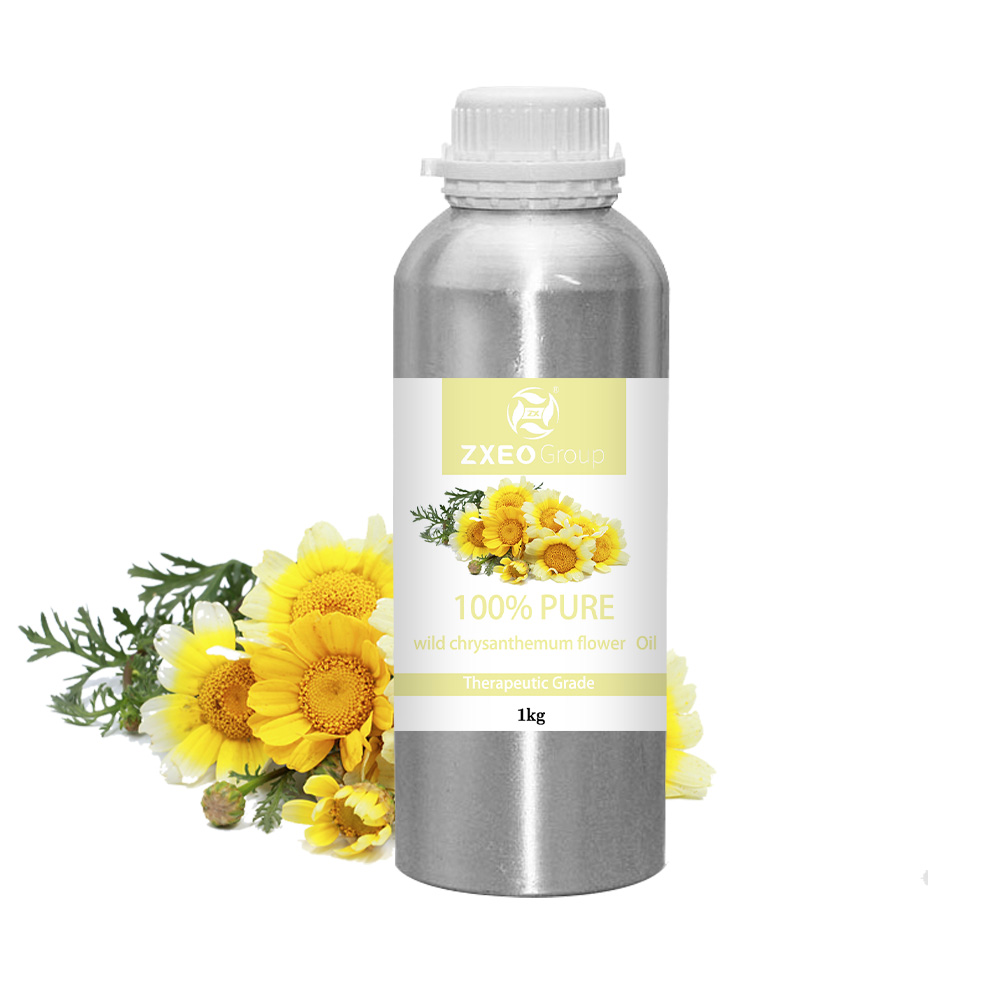
Factory supply bulk Chrysanthemum oil/wild chrysanthemum flower oil dried flower extract essential oil
Insect Repellents
Chrysanthemum oil contains a chemical called pyrethrum, which repels and kills insects, especially aphids. Unfortunately, it can also kill insects that are beneficial to plants, so care should be used when spraying insect repelling products with pyrethrum in gardens. Insect repellents for humans and pets also often contain pyrethrum. You can also make your own insect repellent by mixing chrysanthemum oil with other fragrant essential oils like rosemary, sage and thyme. However, allergies to chrysanthemum are common, so individuals should always test natural oil products before using on skin or internally.
Antibacterial Mouthwash
Studies have shown that the active chemicals in chrysanthemum oil, including pinene and thujone, are effective against common bacteria that live in the mouth. Because of this, chrysanthemum oil can be a component of all-natural antibacterial mouthwashes or used to combat mouth infections. Some herbal medicine experts recommend the use of chrysanthemum oil for antibacterial and antibiotic use. Chrysanthemum tea has also been used for its antibiotic properties in Asia.
Gout
Scientists have studied how many herbs and flowers like chrysanthemum long used in Chinese medicine help with certain ailments like diabetes and gout. Studies showed that extract of the chrysanthemum plant, along with other herbs like cinnamon, are effective in treating gout. The active ingredients in chrysanthemum oil may inhibit an enzyme that contributes to gout. This does not mean that patients with gout should ingest chrysanthemum oil. All herbal remedies should be discussed with a doctor before being ingested.
Fragrance
Because of their pleasant fragrance, the dried petals of the chrysanthemum flower have been used in potpourri and to freshen linens for hundreds of years. Chrysanthemum oil can also be used in perfumes or scented candles. The scent is light and flowery without being heavy.
Other Names
Because there are many different flowers and herb species under the Latin name chrysanthemum, the essential oil may be labeled as another plant. Herbalists and perfumers also call chrysanthemum tansy, costmary, feverfew chrysanthemum and balsamita. The essential oil of the chrysanthemum may be listed in herbal remedy books and stores under any of these names. Always check the Latin name of all plants before buying essential oils.
-
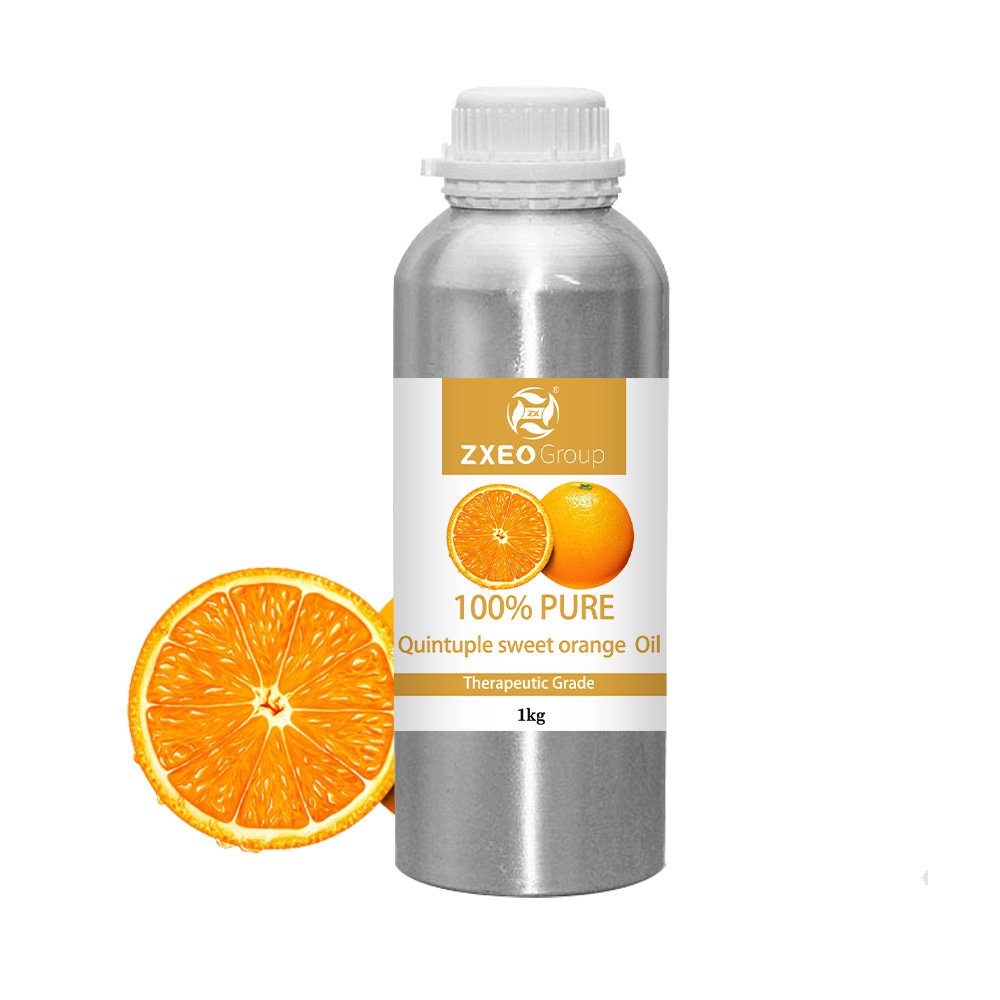
cosmetic grade factory supply wholesale bulk quintuple sweet orange oil custom label quintuple sweet orange essential oil
Orange Oil, most commonly referred to as Sweet Orange Essential Oil, is derived from the fruits of the Citrus sinensis botanical. Conversely, Bitter Orange Essential Oil is derived from the fruits of the Citrus aurantium botanical. The exact origin of Citrus sinensis is unknown, as it does not grow wild anywhere in the world; however, botanists believe that it is a natural hybrid of the Pummelo (C. maxima) and the Mandarin (C. reticulata) botanicals and that it originated between the South-West of China and the Himalayas. For several years, the Sweet Orange tree was considered to be a form of the Bitter Orange tree (C. aurantium amara) and was thus referred to as C. aurantium var. sinensis.
According to historical sources: In 1493, Christopher Columbus carried Orange seeds during his expedition to the Americas and eventually they reached Haiti and the Caribbean; in the 16th century, Portuguese explorers introduced Orange trees to the West; in 1513, Ponce de Leon, the Spanish explorer, introduced Oranges to Florida; in 1450, Italian traders introduced Orange trees to the Mediterranean region; in 800 AD, Oranges were introduced to eastern Africa and the Middle East by Arab traders and were then distributed through the trade routes. In the 15th century, Portuguese travelers introduced the Sweet Oranges they brought back from China to the woodland areas of West Africa and to Europe. In the 16th century, Sweet Oranges were introduced in England. It is believed that Europeans valued Citrus fruits mainly for their medicinal benefits, but the Orange was quickly adopted as a fruit. Eventually, it came to be cultivated by the wealthy, who grew their own trees in private “orangeries.” The Orange has come to be known as the oldest and the most commonly grown tree fruit in the world.
For thousands of years, Orange Oil’s ability to naturally enhance immunity and reduce several symptoms of numerous ailments have lent it to traditional medicinal applications for the treatment of acne, chronic stress, and other health concerns. The folk remedies of the Mediterranean region as well as the regions of the Middle East, India, and China used Orange Oil to relieve colds, coughs, chronic fatigue, depression, flu, indigestion, low libido, odors, poor circulation, skin infections, and spasms. In China, Oranges are believed to symbolize good fortune and thus they continue to be a significant feature of the traditional medicinal practices. It is not only the benefits of the pulp and the oils that are valuable; the dried fruit rinds of both the Bitter and Sweet varieties of Orange have also been used in traditional Chinese medicine to soothe the aforementioned ailments as well as to address anorexia.
Historically, Sweet Orange Essential Oil had many domestic uses such as when it was used to add the Orange flavor to soft drinks, candy, desserts, chocolates and other sweetmeats. Industrially, the anti-septic and preservative properties of Orange Oil made it ideal for use in the production of cosmetics and skin care products such as soaps, creams, lotions, and deodorants. For its natural anti-septic properties, Orange Oil was also used in cleaning products such as room freshening sprays. In the early 1900s, it was used to scent several products such as detergents, perfumes, soaps, and other toiletries. Over time, Sweet Orange Oil and other citrus oils began to be replaced with synthetic citrus fragrances. Today, it continues to be used in similar applications and has gained popularity as a sought-after ingredient in cosmetic and health products for its astringent, cleansing, and brightening properties, among many others.
-
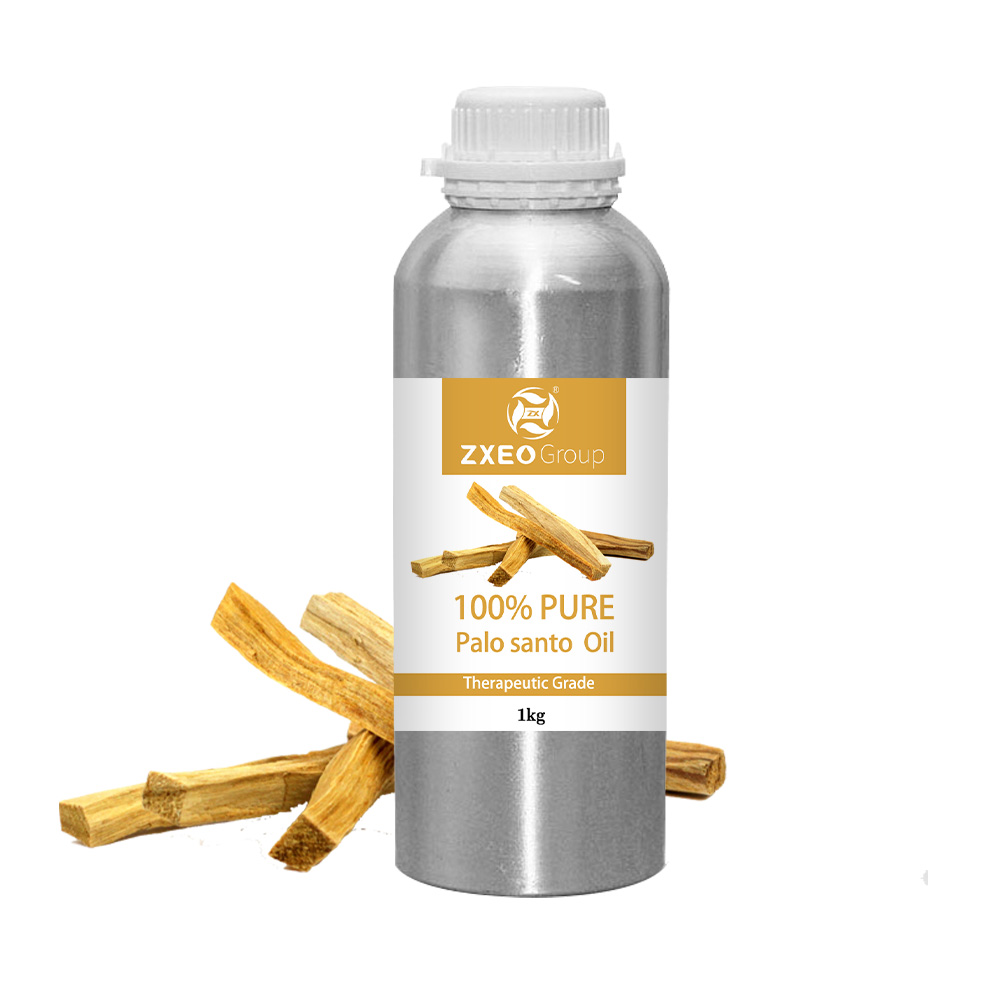
Custom Wholesale Palo Santo Stick And Palo Santo Essential Oils
Good for Youthful Skin
If you struggle with dry or flaky skin, Palo Santo oil can save the day! It’s full of nutrients and moisturizing properties that keep your skin dewy and gorgeous.
2It Relaxes the Senses
Palo Santo’s aroma uplifts your mood and cleanses the space of negativity, placing you in a calm state of mind for journaling or doing some yoga. It also grounds your senses the minute you step into the room, which can be a heavenly experience after a tiresome day.
3Oil to Repel Bugs
Benefits of Palo Santo extend beyond health-based uses. It is used to repel bugs as well. (But yes, bugs do pose a health risk.) The content of limonene and the chemical composition of the oil are useful in driving away the bugs. It is these chemicals that drive the insects from the plants as well.
4Useful in Soothing the Body
A few drops of the oil can be mixed with a carrier oil such as coconut oil or jojoba oil and applied topically to soothe the skin, muscles and joints.
5Oil for Relaxation
The aromatic molecules (odor) of the oil of Palo Santo enter the limbic system through the olfactory system and stimulate it. This reduces negative thoughts. It can be inhaled or applied on the temple or chest.
Just make sure it is not undiluted and be mindful of the quantity applied. Shamans from ancient times smudge the plant extract on your skin as it was used to clear negative energy by driving away evil spirits. It was considered holy wood.
6Improve Rest Quality with Palo Santo Oil
The oil induces relaxaxtion when applied on the skin. (Do not apply the oil on your skin without dilution.) Palo santo benefits those with hectic lifestyles.
-
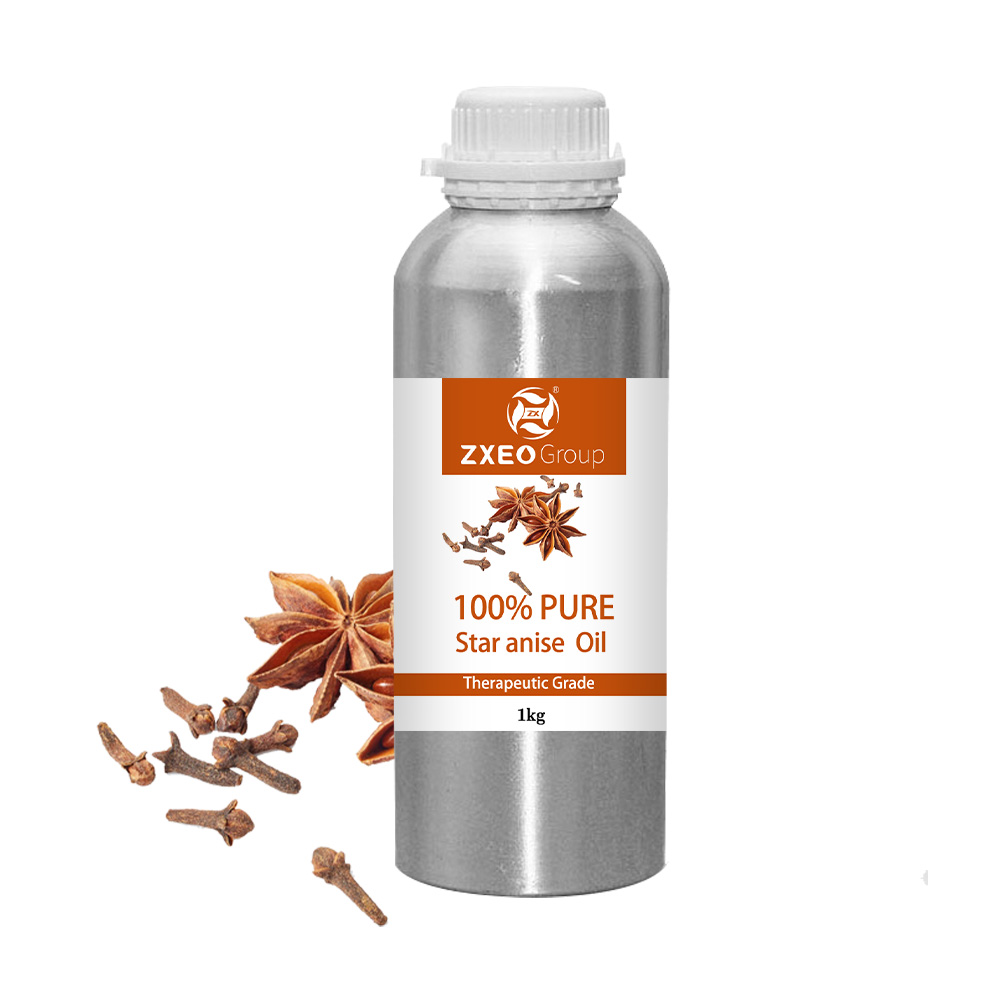
Best price anise star oil essential seed extract star anise oil
Improves Skin Health
It’s clear to you that your skin needs quality oil to look and feel well-taken care-off. With natural properties that help your body fight off infections, anise provides you with an oil option good for your skin. It will deep clean your skin such that possible pores that cause acne get eliminated. It also has active ingredients that support the repair and healing process of your body skin. Anise, therefore, helps your skin to:
- Fight-off acne in a way that you don’t require to use medications or any laser procedures. It’s helpful when you add about 5 drops of anise oil to your facial toner.
- Healing your wounds by repairing your skin when you get burns, injury, acne scars, and wounds.
- The oil acts as a good antiseptic which you can use in case of small abrasions or minor cuts.
- It acts as a good skin product to ward off fungal and microbial infections.
- If you have ever held black licorice near your nose, you’re then aware of the kind of aroma anise produces. A small drop of the anise seed’s essential oil can make a notable change to any dull inhaler blend. That’s why it’s useful when it comes to easing colds, flu, and bronchitis when mixed with other inhaler blends. The fragrance properties found in anise gives it a rich and sweet scent good for aromatherapy products.
Aromatherapy refers to several traditional therapy processes that use essential oils and other known plant compounds with aromatic properties. Annette Davis, the President of the National Association for Holistic Aromatherapy defined aromatherapy as the medicinal use of essential oil healing to achieve holistic healing. Anise oil, like other essential oils is ideal for Aromatherapy applications like inhalation and massage. Anise is also used to make Aromatherapy products like cosmetics, perfumes, and pharmaceuticals.
-
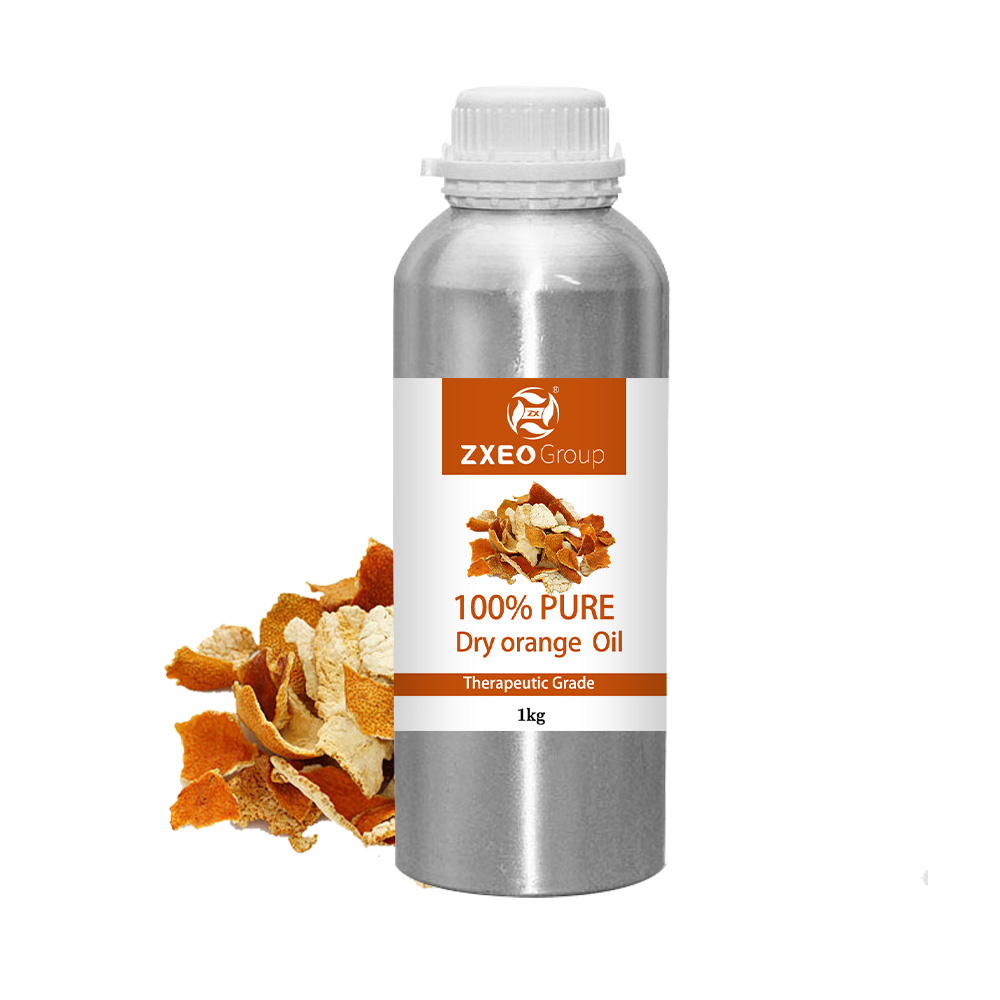
wholesale jojoba olive jasmine body oil coconut vitamin E rose fragrance brightening moisturizing body oil for dry skin
1. Acne Fighter
The antibacterial, antiviral and anti-inflammatory properties of orange essential oil help to effectively treat acne and pimples. Using sweet orange oil for skin breakouts is highly recommended as a little oil provides soothing relief to red, painful skin eruptions naturally. Adding orange oil to any homemade face pack will not only help to heal acne but will also restrict the cause of its formation. For overnight acne treatment, you can simply mix a drop or two of orange essential oil with a teaspoon of aloe vera gel and dab a thick layer of the mixture on your acne or apply it to your acne-prone area.
2. Controls Oil
Due to the boosting properties of orange oil, it acts as a tonic and ensures that particular organs and glands secrete the appropriate amounts of hormones and enzymes. This is specifically significant in respect to the production of sebum. Overproduction of sebum by the sebaceous glands leads to oily skin and greasy scalp. Orange oil helps to reduce the secretion of excess sebum and maintains your skin’s natural oil balance. Prepare a quick orange facial toner for everyday use by adding 5-6 drops of orange essential oil to a cup of distilled water. Shake well and use this solution evenly on your clean face. Follow it up with a water-based moisturizer to get rid of oily skin.
3. Reduces Dark Spots
The use of sweet orange oil for skin pigmentation is highly beneficial as the oil is a rich source of vitamin C. It acts as a natural means to treat scars, blemishes and dark spots so that you get clear, even-toned skin without the use of chemical compounds. Prepare an easy face mask with honey and orange essential oil to reduce sun tan and hyperpigmentation. Also, you can use homemade orange oil scrub to get rid of damaged skin cells and add a healthy glow to your skin. With continuous use, you will notice that your dark spots and blemishes have gradually faded, improving the overall texture of your skin.
Anti-ageing
Orange essential oil is perhaps one of the most effective remedies when it comes to treating the symptoms of premature skin ageing. With age, your skin tries to lose elasticity that makes way for wrinkles and fine lines. The abundance of antioxidant compounds in orange oil prevents and reduces signs of ageing by fighting off free radicals and boosting collagen production. Rather than opting for expensive anti-ageing skin treatments, use orange oil face masks twice a week to improve skin cell regeneration and reduce the appearance of sunspots and age spots. This will not only help you to achieve a youthful skin but also provide hydration to your skin cells.
5. Improves Blood Circulation to Skin
Massaging your skin with diluted sweet orange helps to promote blood flow. Proper blood circulation delivers essential nutrients to your skin cells that keep them active and healthy. As a result, your skin feels rejuvenated and fresh for a longer period of time as well as protects itself from radical damage. Using orange oil on the skin acts as a circulation booster that facilitates the growth of skin cells by replacing old, damaged cells with new ones. Moreover, due to the presence of monoterpenes, the use of orange oil for skin cancer prevention is highly acknowledged all around the globe.
6. Reduces Large Pores
Large open pores on your face are a sign of unhealthy skin and can make way for various skin problems like blackheads and acne. There are a number of home remedies to minimize enlarged pores but very few provide long term results. The astringent properties in the orange essential oil help to naturally shrink your skin pores and restore your skin’s suppleness and elasticity. A decrease in the appearance of enlarged pores will tighten your skin and improve your complexion. Prepare a DIY facial toner with orange oil to get rid of open pores permanently and say goodbye to dull, aged skin.
-

Factory Price 100% Pure Natural Sea Buckthorn Berry Oil Cold Pressed Organic Seabuckthorn Fruit Oil
BENEFITS OF SEA BUCKTHORN CARRIER OIL
Sea Buckthorn berries are naturally abundant in Antioxidants, Phytosterols, Carotenoids, skin-supporting Minerals, and Vitamins A, E, and K. The luxurious oil that is extracted from the fruit yields a rich, versatile emollient that possesses a unique Essential Fatty Acid profile. Its chemical composition consists of 25.00%-30.00% Palmitic Acid C16:0, 25.00%-30.00% Palmitoleic Acid C16:1, 20.0%-30.0% Oleic Acid C18:1, 2.0%-8.0% Linoleic Acid C18:2, and 1.0%-3.0% Alpha-Linolenic Acid C18:3 (n-3).
VITAMIN A (RETINOL) is believed to:
- Promote Sebum production on dry scalp, resulting in balanced hydration on the scalp and healthy-looking hair.
- Balance Sebum production on oily skin types, promoting cell turnover and exfoliation.
- Slow down the loss of collagen, elastin, and keratin in aging skin and hair.
- Reduce the appearance of hyperpigmentation and sunspots.
VITAMIN E is believed to:
- Combat oxidative stress on the skin, including the scalp.
- Support a healthy scalp by preserving the protective layer.
- Add a protective layer to hair and shine to lackluster strands.
- Stimulate collagen production, helping skin appear more supple and vibrant.
VITAMIN K is believed to:
- Help protect the existing collagen in the body.
- Support skin elasticity, easing the appearance of fine lines and wrinkles.
- Promote the regeneration of hair strands.
PALMITIC ACID is believed to:
- Occur naturally in the skin and is the most common fatty acid found in animals, plants, and microorganisms.
- Act as an emollient when applied topically through lotions, creams, or oils.
- Possess emulsifying properties that prevents ingredients from separating in formulations.
- Soften the hair shaft without weight hair down.
PALMITOLEIC ACID is believed to:
- Protect against oxidative stress caused by environmental stressors.
- Promote skin cell turnover, revealing newer, healthy-looking skin.
- Increase elastin and collagen production.
- Rebalance the acid levels in the hair and scalp, restoring hydration in the process.
OLEIC ACID is believed to:
- Act as a cleansing agent and texture enhancer in soap formulations.
- Emit skin soothing properties when blended with other lipids.
- Replenishes dryness related to aging skin.
- Defend skin and hair from free radical damage.
LINOLEIC ACID is believed to:
- Help strengthen the skin’s barrier, keeping impurities at bay.
- Improve water retention in the skin and the hair.
- Treat dryness, hyperpigmentation, and sensitivity.
- Maintain healthy scalp conditions, which may stimulate hair growth.
ALPHA-LINOLEIC ACID is believed to:
- Inhibit melanin production, improving hyperpigmentation.
- Possess soothing properties that are beneficial for acne-prone skin.
Due to its unique Antioxidant and Essential Fatty Acid profile, Sea Buckthorn Carrier Oil protects the integrity of the skin and promotes skin cell turnover. Hence, this oil possesses a versatility that can support an array of skin types. It can be used on its own as a primer for face and body lotion, or it can be incorporated into a skin care formulation. Fatty Acids such as Palmitic and Linoleic acids naturally occur within the skin. Topical application of oils possessing these fatty acids can help soothe skin and promote healing from inflammation. Sea Buckthorn Oil is a common ingredient in anti-aging products. Overexposure to the sun, pollution, and chemicals can trigger signs of premature aging to form onto the skin. Palmitoleic Acid and Vitamin E are believed to protect the skin against oxidative stress caused by environmental elements. Vitamins K, E, and Palmitic Acid also have the potential to enhance collagen and elastin production while preserving existing levels within the skin. Sea Buckthorn Oil is an effective emollient that targets dryness related to aging. Oleic and Stearic Acids produce a moisturizing layer that improves water retention, giving skin a healthy glow that is soft to the touch.
Sea Buckthorn Oil is equally emolliating and strengthening when applied to the hair and scalp. For scalp health, Vitamin A is believed to balance the overproduction of sebum on an oily scalp, while promoting oil production on a drier scalp. This replenishes the hair shaft and gives it a healthy sheen. Vitamin E and Linoleic Acid also has potential to maintain healthy scalp conditions that are the foundations of new hair growth. Like its skin care benefits, Oleic Acid fights free radical damage that can make hair appear dull, flat, and dry. Meanwhile, Stearic Acid possesses thickening properties that emits a fuller, more voluptuous look in the hair. Along with its ability to support skin and hair health, Sea Buckthorn also possesses cleansing properties due to its Oleic Acid content, making it suitable for soap, body wash, and shampoo formulations.
NDA’s Sea Buckthorn Carrier Oil is COSMOS approved. The COSMOS-standard ensures that businesses are respecting biodiversity, using natural resources responsibly, and preserving environmental and human health when processing and manufacturing their materials. When reviewing cosmetics for certification, the COSMOS-standard inspects the origin and processing of ingredients, composition of total product, storage, manufacturing and packaging, environmental management, labelling, communication, inspection, certification, and control. For more information, visit https://www.cosmos-standard.org/
CULTIVATING AND HARVESTING QUALITY SEA BUCKTHORN
Sea Buckthorn is a salt-tolerant crop that can grow in an array of soil qualities, including in very poor soils, acidic soils, alkaline soils, and on steep slopes. However, this spiny shrub grows best in deep, well-drained sandy loam soil that is abundant in organic matter. The ideal soil pH for growing Sea Buckthorn ranges between 5.5 and 8.3, although the optimal soil pH is between 6 and 7. As a hardy plant, Sea Buckthorn can withstand temperatures of -45 degrees to 103 degrees Fahrenheit (-43 degrees to 40 degrees Celsius).
The Sea Buckthorn berries turn bright orange when they are ripe, which typically occurs between late August and early September. Despite achieving ripeness, the Sea Buckthorn fruit is difficult to remove from the tree. An estimate of 600 hours/acre (1500 hours/hectare) for fruit harvesting is expected.
EXTRACTING SEA BUCKTHORN OIL
Sea Buckthorn Carrier Oil is extracted using the CO2 method. To perform this extraction, the fruits are ground and placed in an extraction vessel. Then, CO2 gas is put under pressure to produce a high temperature. Once the ideal temperature is reached, a pump is used to transmit the CO2 into the extraction vessel where it encounters the fruit. This breaks down the trichomes of the Sea Buckthorn berries and dissolves part of the plant material. A pressure release valve is connected to the initial pump, allowing the material to flow into a separate vessel. During the supercritical phase, the CO2 acts as a “solvent” to extract the oil from the plant.
Once the oil is extracted from the fruits, the pressure is lowered so the CO2 can return to its gaseous state, dissipating quickly.
USES OF SEA BUCKTHORN CARRIER OIL
Sea Buckthorn Oil has oil balancing properties that can reduce overproduction of sebum in greasy areas, while also promoting sebum production in areas where it is lacking. For oily, dry, acne-prone, or combination skin, this fruit oil can act as an effective serum when applied after cleansing and before moisturizing. Using Sea Buckthorn Oil after using a cleanser is also beneficial for the skin barrier that may be vulnerable after washing. The Essential Fatty Acids, Vitamins, and Antioxidants can replenish any lost moisture and keep the skin cells together, giving skin a youthful, radiant appearance. Due to its soothing properties, Sea Buckthorn can be applied to areas prone to acne, discoloration, and hyperpigmentation to potentially slow the release of inflammatory cells in the skin. In skincare, the face typically receives the most amount of attention and care from everyday products and routines. However, skin on other areas, such as the neck and chest, can be equally as sensitive and thus require the same rejuvenating treatment. Due to its delicacy, the skin on the neck and chest can show early signs of aging, so applying Sea Buckthorn Carrier Oil to those areas can reduce the appearance of premature fine lines and wrinkles.
Regarding hair care, Sea Buckthorn is a wonderful addition to any natural hair care routine. It can be applied directly to the hair when layering styling products, or it can be blended with other oils or leave in conditioners to achieve a customized look that is specific to one’s hair type. This Carrier Oil is also incredibly beneficial for promoting scalp health. Using Sea Buckthorn in a scalp massage can revive the hair follicles, create a healthy scalp culture, and potentially promote healthy hair growth.
Sea Buckthorn Carrier Oil is safe enough for use on its own or can be blended with other Carrier Oils such as Jojoba or Coconut. Due to its deep, reddish orange to brown hue, this oil may not be ideal for those who are sensitive to rich pigmentation. A small skin test on a hidden area of skin is recommended prior to use.
A GUIDE TO SEA BUCKTHORN CARRIER OIL
Botanical Name: Hippophae rhamnoides.
Obtained From: Fruit
Origin: China
Extraction Method: CO2 Extraction.
Color/ Consistency: Deep reddish orange to dark brown liquid.
Due to its unique constituent profile, Sea Buckthorn Oil is solid at cold temperatures and tends to clump up at room temperature. To reduce this, place the bottle in a carefully heated hot-water bath. Change the water continuously until the oil is more liquid in texture. Do not overheat. Shake well prior to use.
Absorption: Absorbs into skin at average speed, leaving a slight oily feeling on the skin.
Shelf Life: Users can expect a shelf life of up to 2 years with proper storage conditions (cool, out of direct sunlight). Keep away from extreme cold and heat. Please refer to the Certificate of Analysis for current Best Before Date.
-
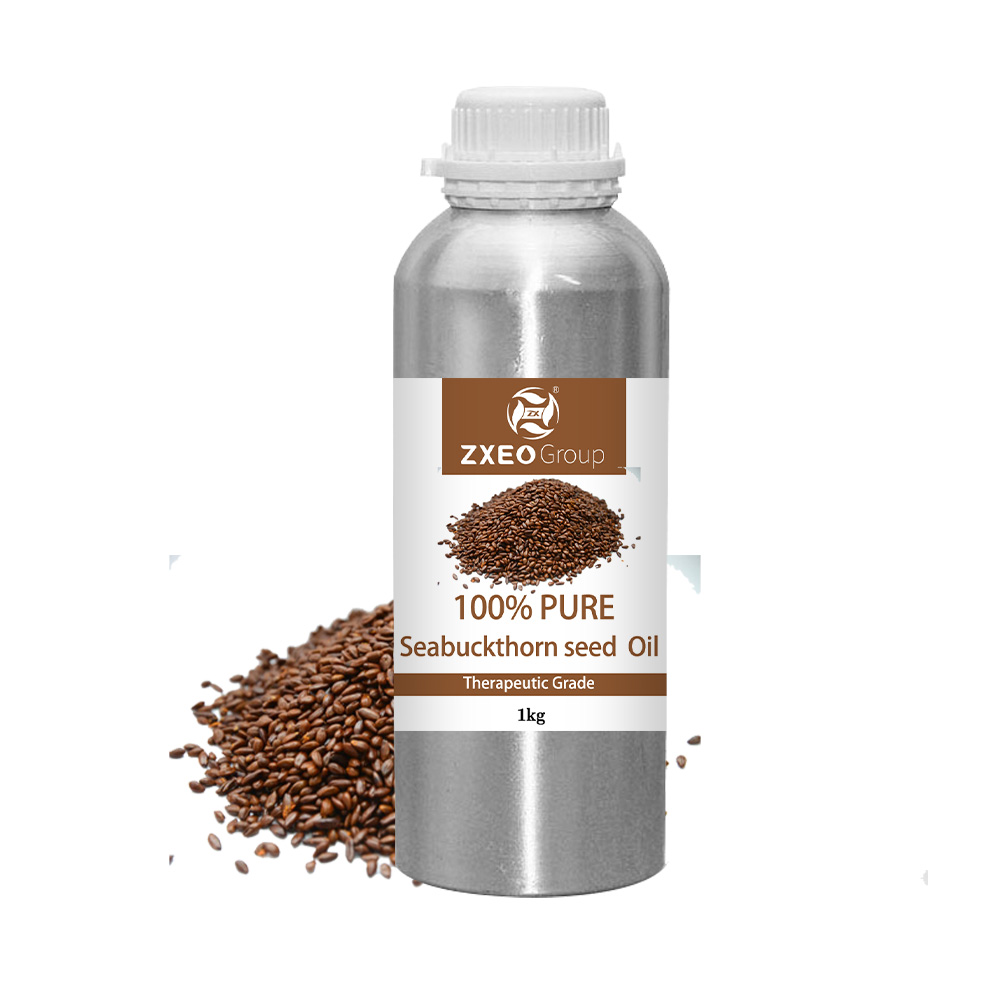
Sea Buckthorn Powder, Organic Seabuckthorn Extract Sea Buckthorn Oil
What Color Is Sea Buckthorn Berry Oil?
Sea buckthorn berry oil ranges from dark red to orange. SeabuckWonders adds no dyes to create a uniform look to our oils. All of our oil products are made in small batches from harvests on our farm each year. This means that you will see a natural variation in color from batch to batch. Some years the oils will appear more red, and other years more orange. Not matter the color, sea buckthorn berry oil should be highly pigmented.
Benefits For Skin: Using Sea Buckthorn Berry Oil Topically
For topical purposes, Omega 7 from sea buckthorn berry oil can help reduce the appearance of scars. If you add a bit of sea buckthorn berry oil to (a sanitized) wound or burn, it may help speed up the healing process and reduce the appearance of future scars. Sea buckthorn berry oil does wonders for moisturizing and nurturing skin cells.
People suffering from long-term skin issues like eczema and psoriasis love to add the oil as a weekly topical treatment to affected areas. The oil can support healthy inflammation response — which can have a soothing effect on skin problems. Learn how to do a proper sea buckthorn berry oil mask here.
Internally it can help gastric intestinal support, soothing to the digestive tract and more.
Sea Buckthorn Berry Oil Products: Health And Beauty Benefits
• Ideal for skin & beauty
• Skin, cell, tissue, and mucous membrane support
• Gastrointestinal relief
• Inflammation response
• Feminine health
-

Wholesale osmanthus essential oil for soap making oil
Osmanthus oil is different from other essential oils. Typically, essential oils are steam distilled. Flowers are delicate, which makes it a little more difficult to extract oils this way. Osmanthus falls into this category.
It takes thousands of pounds to produce a small amount of Osmanthus essential oil. A solvent extraction method may also be used. This produces Osmanthus absolute. All of the solvents are removed before the final product is ready for use.
Osmanthus Essential Oil Uses
Now that you understand how Osmanthus oil is produced, you may be wondering what are some of osmanthus essential oil uses. Because of its high cost and the low yield of Osmanthus oil, you may choose to use it sparingly.
That said, this oil can be used in the same way you would use any other essential oil:
- Adding to a diffuser
- Applying topically when diluted with a carrier oil
- Inhaled
The right choice for you really depends on your personal preference and your purpose for use. Many people find that diffusing the oil or inhaling it is the simplest way to use this oil.
Osmanthus Essential Oil Benefits
Osmanthus essential oil, usually sold as Osmanthus absolute, offers many benefits in addition to its intoxicating aroma.
May Help with Anxiety
Osmanthus has a sweet and floral scent that many people find relaxing and calming. When used for aromatherapy purposes, it may help ease anxiety.
One 2017 study found that Osmanthus essential oil and grapefruit oil helped reduce anxiety in patients undergoing a colonoscopy.
A Soothing and Uplifting Aroma
The scent of Osmanthus essential oil can have uplifting and inspiring effects, which makes it a popular choice in spiritual work, yoga, and meditation.
May Nourish and Soften the Skin
Osmanthus is commonly used in skin care products because of its nourishing properties. The essential oil of this coveted flower is often added to anti-aging products because of its antioxidant and mineral content.
Along with antioxidants, Osmanthus also contains selenium. Together, the two can help fight against free radicals that accelerate the signs of aging. Osmanthus also contains compounds that behave similarly to vitamin E in protecting cell membranes. The carotene in the oil converts to vitamin A, which further protects against damaging free radicals.
To use for skin nourishment, Osmanthus oil can be applied topically diluted with a carrier oil.
May Help with Allergies
Osmanthus oil may help combat airborne allergies. Research shows that this flower contains antioxidants that can help fight inflammation in the airways caused by allergies.
For inhalation, add a few drops of the oil to a diffuser. For skin allergies, the oil can be applied topically if diluted with a carrier oil.
May Repel Insects
Humans may find the scent of Osmanthus to be pleasant, but insects aren’t big fans. Osmanthus essential oil reportedly has insect-repelling properties.
Research has found that the Osmanthus flower contains compounds that repel insects, particularly isopentane extract.
-
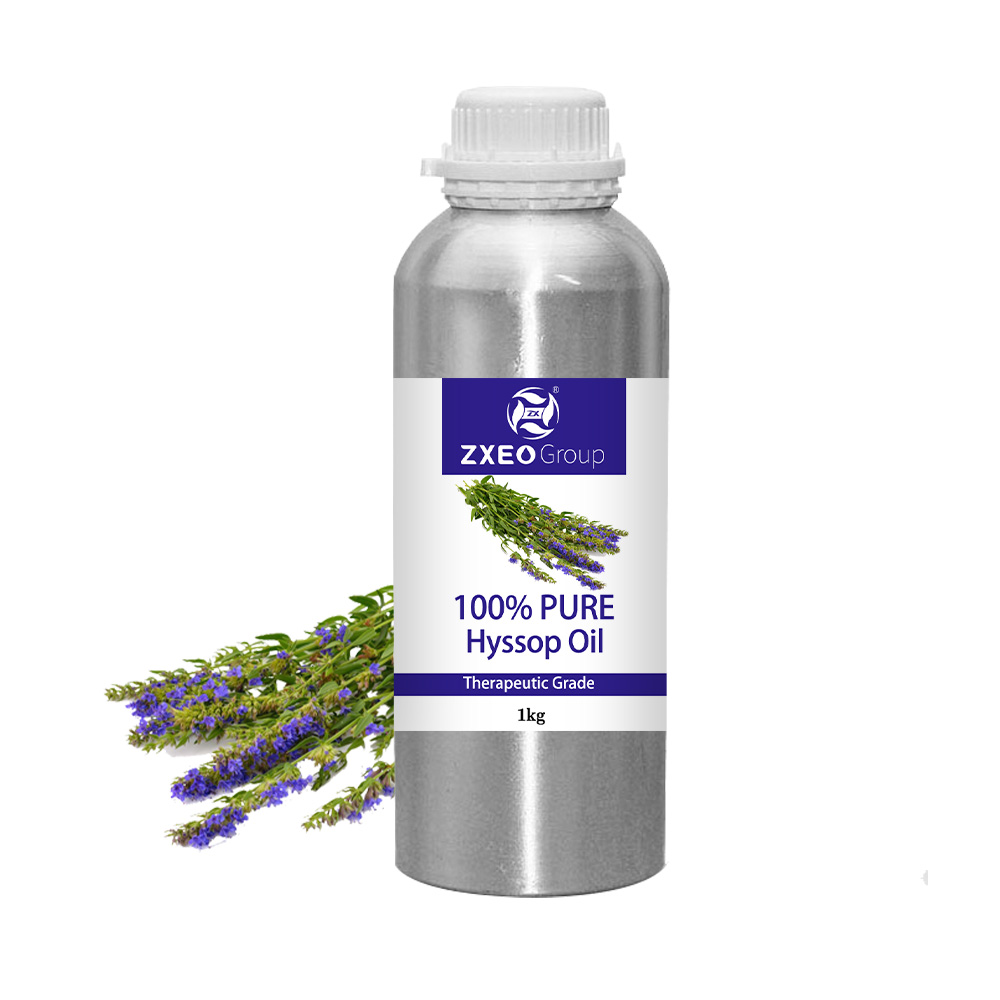
Wholesale Hot Chili Oil Chili Extract Oil Red Color Chilli Oil for Seasoning Food
Hyssop essential oil exhibits antibacterial and antifungal activity against certain strains of pathogenic organisms. A study found that the herbal oil showed strong antimicrobial activity against Staphylococcus pyogenes, Staphylococcus aureus, Escherichia coli and Candida albicans.
In addition to being an effective antimicrobial agent, hyssop essential oil may be used for the following health conditions:
- Aging-related skin problems, such as sagging and wrinkles
- Muscle spasms and cramps, and acute abdominal pain
- Arthritis, rheumatism, gout and inflammation
- Loss of appetite, stomachaches, flatulence and indigestion
- Fevers
- Hypotension or low blood pressure
- Irregular menstrual cycles and menopause
- Respiratory problems, such as colds, cough and flu
-
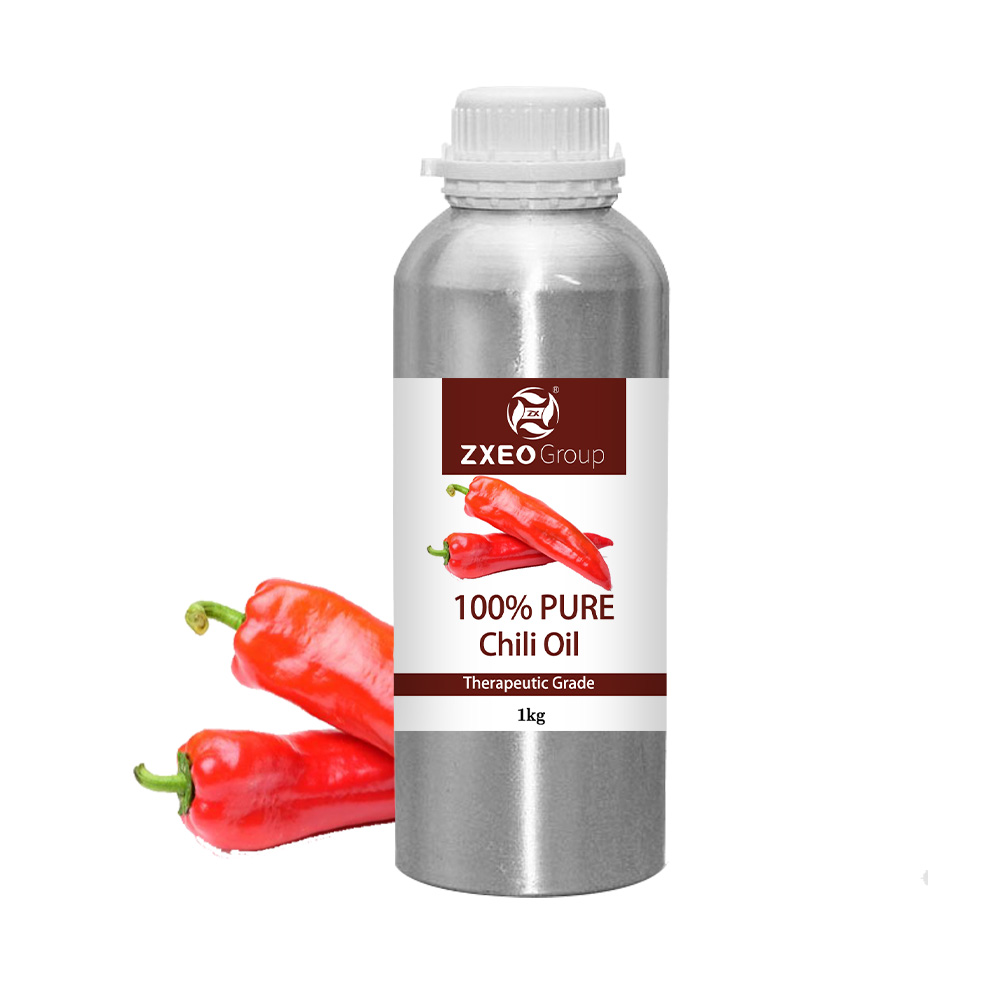
Wholesale Hot Chili Oil Chili Extract Oil Red Color Chilli Oil for Seasoning Food
Many people use chili oil, both topically and internally, if they are suffering from arthritis, sinus congestion, gastrointestinal issues, oxidative stress, a weak immune system, macular degeneration, obesity, high cholesterol, chronic pain, dementia, psoriasis, and eczema.
May Help Prevent Chronic Diseases
The potential antioxidant capacity of chili oil is rather incredible, due to the high concentration of capsaicin, an antioxidant compound that provides the majority of health benefits in chili peppers. This antioxidant, along with various other related compounds, can seek out and neutralize free radicals anywhere in the body, which can lower oxidative stress and lower your risk of developing chronic disease. [2]
May Stimulate Immune System
Capsaicin is also able to stimulate the immune system, and chili oil is known to have moderate levels of vitamin C. This can help to boost production of white blood cells, while also working as an antioxidant to relieve strain on the immune system. If you have a cough, cold, or congestion, a small dose of chili oil can help speed recovery.
-

rosewood essential oil 100% Pure Oganic Plant Natrual rose wood oil for Soaps, Candles, Massage, Skin Care, Perfumes, cosmetics
- Bronchial Infection
- Tonsillitis
- Cough
- Stress Headache
- Convalescence
- Acne
- Eczema
- Psoriasis
- Scarring
- Insect Bites
- Stings
- Nervousness
- Depression
- Anxiety
- Stress
-
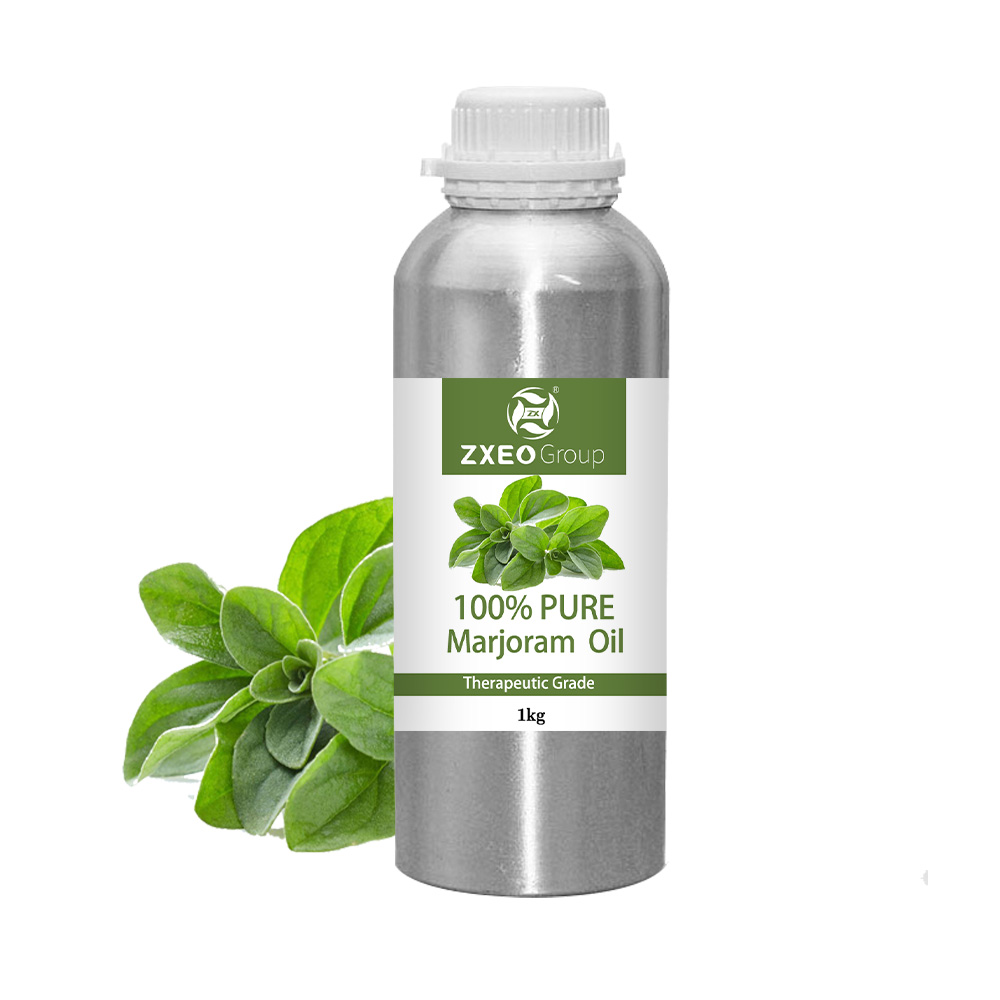
Marjoram Essential Oil Marjoram Oil Price Bulk Marjoram Sweet Oil 100% Pure
Digestive Aid
Including marjoram spice in you diet may help to improve your digestion. The scent of it alone can stimulate the salivary glands, which helps the primary digestion of food that takes place in your mouth.
Research shows that its compounds have gastroprotective and anti-inflammatory effects.
The herb’s extracts continue to help you digest your meals by stimulating the peristaltic movement of the intestines and encouraging elimination.
If you suffer from digestive problems like nausea, flatulence, stomach cramps, diarrhea or constipation, a cup or two of marjoram tea can help alleviate your symptoms. You can also try adding the fresh or dried herb to your next meal for digestive comfort or use marjoram essential oil in a diffuser.
2. Women’s Issues/Hormonal Balance
Marjoram is known in traditional medicine for its ability to restore hormonal balance and regulate the menstrual cycle. For women dealing with hormone imbalance, this herb may finally help you maintain normal and healthy hormone levels.
Whether you’re dealing with the unwanted monthly symptoms of PMS or menopause, this herb can provide relief for women of all ages.
It’s been shown to act as an emmenagogue, which means it can be used to help start menstruation. It’s also been used traditionally by nursing moms to promote breast milk production.
Polycystic ovarian syndrome (PCOS) and infertility (often resulting from PCOS) are other significant hormonal imbalance issues that this herb has been shown to improve.
A 2016 study published in the Journal of Human Nutrition and Dietetics evaluated the effects of marjoram tea on the hormonal profile of women with PCOS in a randomized, double-blind, placebo-controlled trial. The study’s results revealed the positive effects of the tea on the hormonal profile of PCOS women.
The tea improved insulin sensitivity and reduced the levels of adrenal androgens in these women. This is very significant since an excess of androgens is at the root of hormone imbalance for many women of reproductive age.
3. Type 2 Diabetes Management
The Centers for Disease Control and Prevention reports that one in 10 Americans has diabetes, and the number only continues to rise. The good news is that a healthy diet, along with a healthy overall lifestyle, is one of the best ways that you can prevent and manage diabetes, especially type 2.
Studies have shown that marjoram is a plant that belongs in your anti-diabetes arsenal and something you should definitely include in your diabetic diet plan.
Specifically, researchers found that commercial dried varieties of this plant, along with Mexican oregano and rosemary, act as a superior inhibitor of the enzyme known as protein tyrosine phosphatase 1B (PTP1B). In addition, greenhouse-grown marjoram, Mexican oregano and rosemary extracts were the best inhibitors of dipeptidyl peptidase IV (DPP-IV).
This is an awesome finding since the reduction or elimination of PTP1B and DPP-IV helps improve insulin signaling and tolerance. Both fresh and dried marjoram can help improve the body’s ability to properly manage blood sugar.
4. Cardiovascular Health
Marjoram can be a helpful natural remedy for people at high risk or suffering from high blood pressure symptoms and heart problems. It’s naturally high in antioxidants, making it excellent for the cardiovascular system as well as the whole body.
It’s also an effective vasodilator, which means that it can help widen and relax the blood vessels. This eases the flow of blood and reduces blood pressure.
The inhalation of marjoram essential oil has actually been shown to lower sympathetic nervous system activity and stimulate the parasympathetic nervous system, resulting in vasodilatation to reduce cardiac strain and decrease blood pressure.
An animal study published in Cardiovascular Toxicology found that sweet marjoram extract worked as an antioxidant and inhibited the production of nitric oxide and lipid peroxidation in myocardial infarcted (heart attack) rats.
By simply smelling the plant, you can decrease your fight-or-flight response (sympathetic nervous system) and increase your “rest and digest system” (parasympathetic nervous system), which lessens the strain on your entire cardiovascular system, not to mention your whole body.
5. Pain Relief
This herb can help reduce the pain that often comes with muscle tightness or muscle spasms, as well as tension headaches. Massage therapists often include the extract in their massage oil or lotion for this very reason.
A study published in Complementary Therapies in Medicine indicates that when sweet marjoram aromatherapy was used by nurses as part of patient care, it was able to reduce pain and anxiety.
Marjoram essential oil is very effective at relieving tension, and the anti-inflammatory and calming properties of it can be felt in both body and mind. For relaxation purposes, you can try diffusing it in your home and using it in your homemade massage oil or lotion recipe.
Amazing but true: Just the inhalation of marjoram can calm the nervous system and lower blood pressure.
6. Gastric Ulcer Prevention
A 2009 animal study published in the American Journal of Chinese Medicine evaluated marjoram’s ability to prevent and treat gastric ulcers. The study found that at doses of 250 and 500 milligrams per kilogram of body weight, it significantly decreased the incidence of ulcers, basal gastric secretion and acid output.
Additionally, the extract actually replenished the depleted gastric wall mucus, which is key to healing ulcer symptoms.
Marjoram not only prevented and treated ulcers, but it was also proved to have a large margin of safety. The aerial (above ground) parts of marjoram were also shown to contain volatile oils, flavonoids, tannins, sterols and/or triterpenes.

